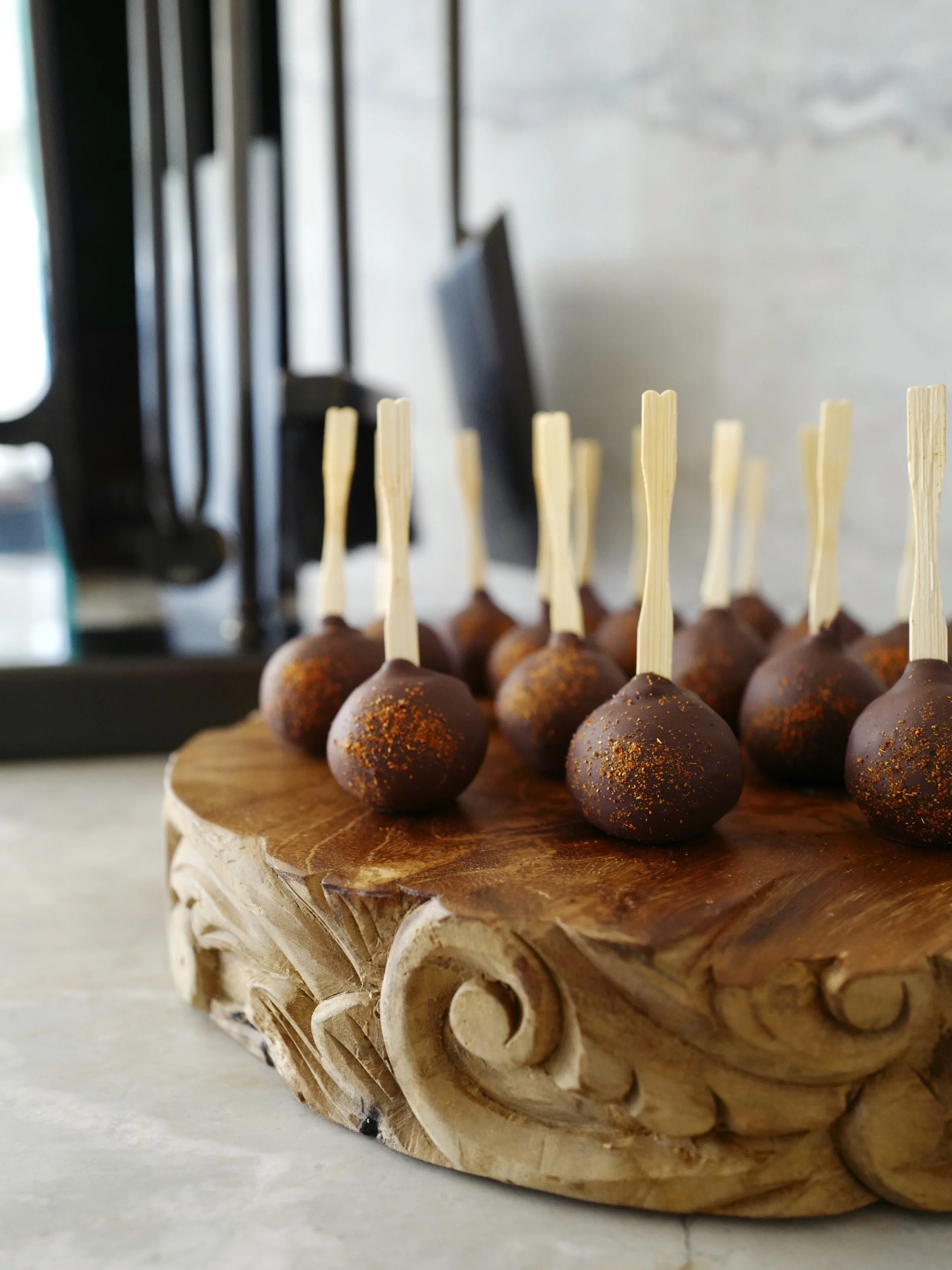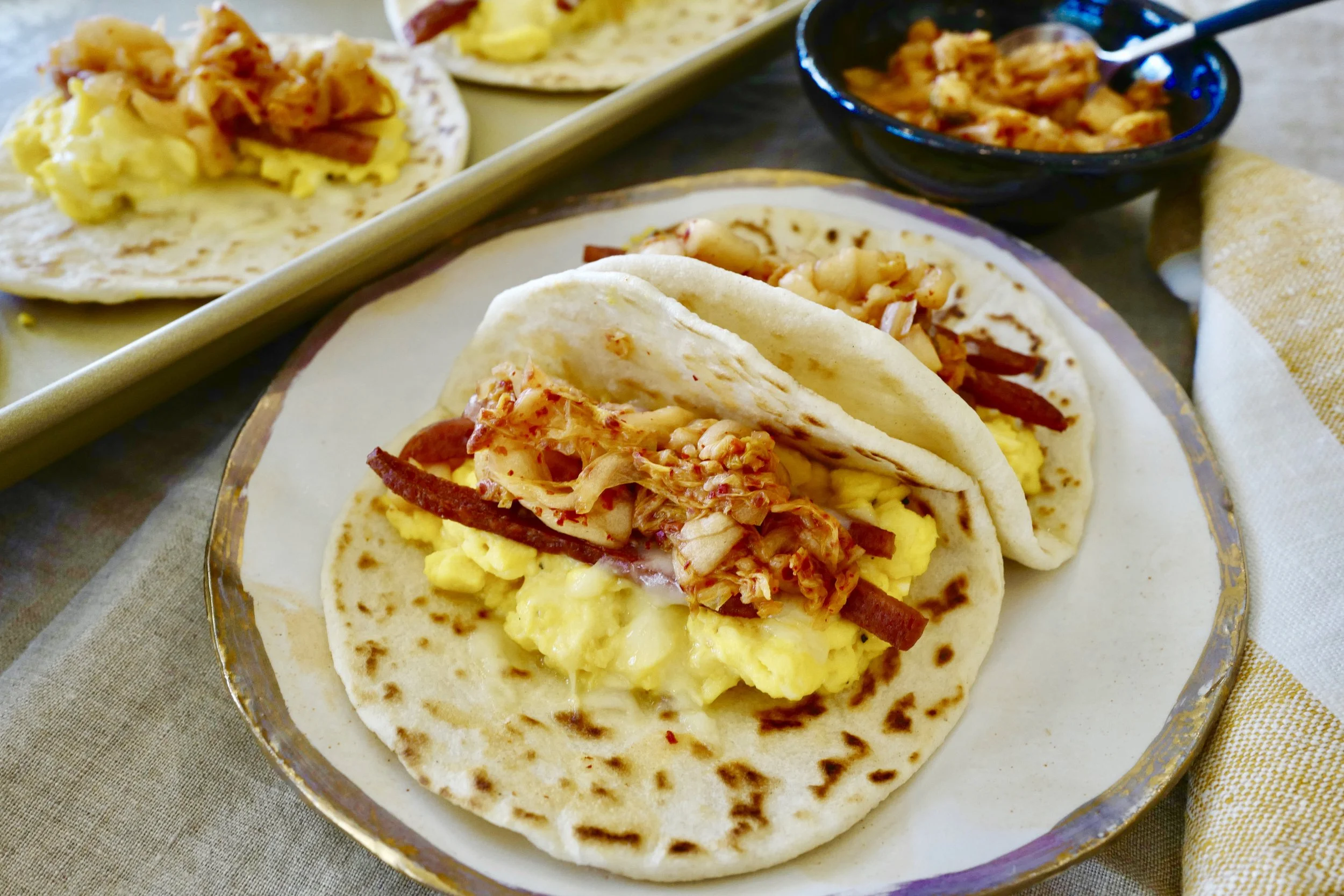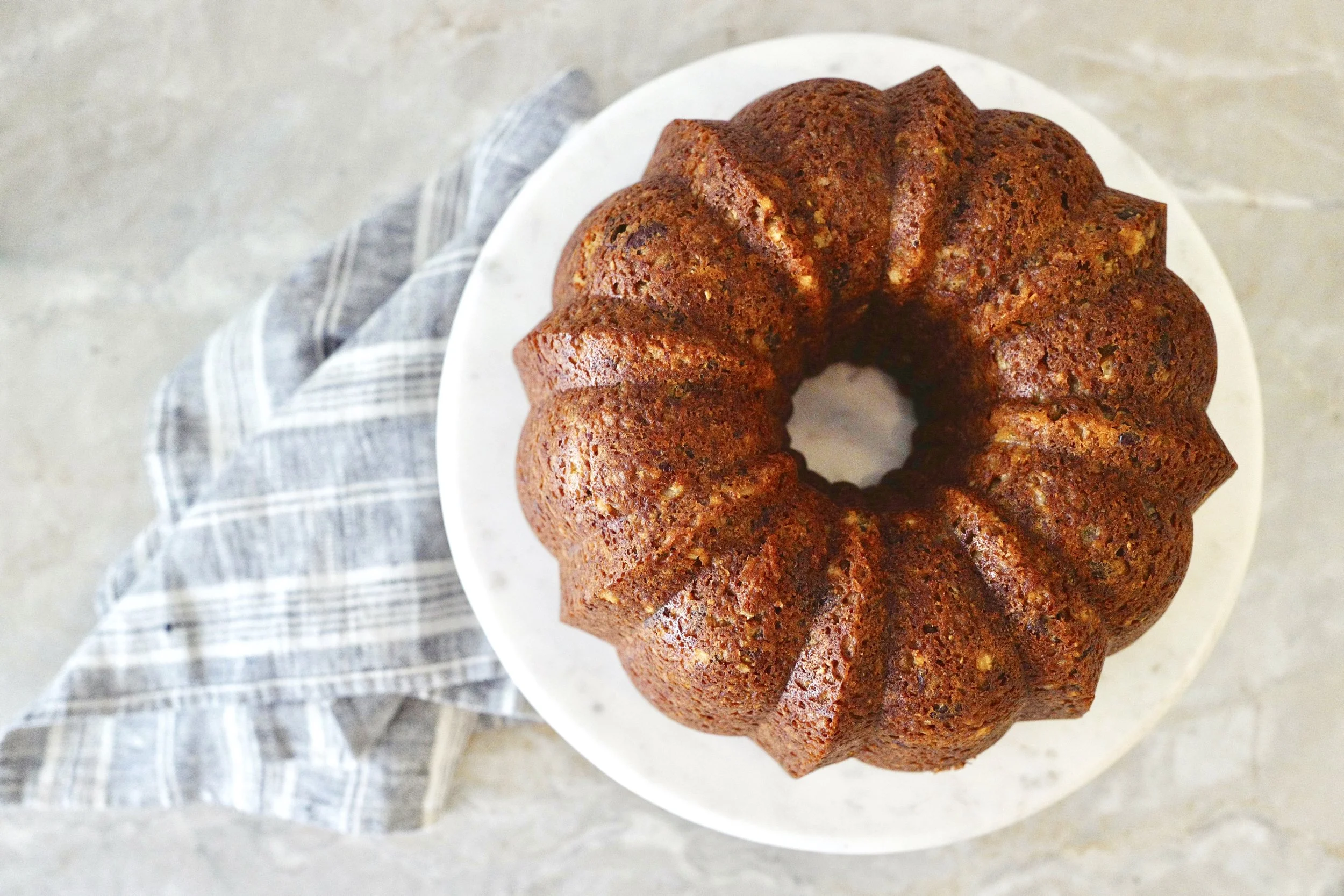Species 001: Fiery Chocolate Cake Pops
This is a sneak peek article. For the full suite of recipes, check back here in April.
As an undergrad studying Computer Science & Molecular Biology at MIT, I found Cambridge to be a rather stressful place—and coming from Paris where the most stressful thing I had to do was create a molten sugar sculpture, I often found myself craving some balance between the French joie de vivre and the ambitious let’s-change-the-world attitude I was now surrounded by. Luckily, just a five-minute power walk away from MIT’s Infinite Corridor lay the venerable Flour Bakery & Café.
Joanne Chang, the James Beard Award winning creator of Flour, presents the very best side of French pastries—the homey side, the comforting side. When I was living in Paris, I noticed that many French pastries are the food equivalent of modern art (i.e. rather perplexing to look at, let alone eat), but not so at Flour. In fact, Chang’s French pastries stand side-by-side with American home classics, and nobody is the wiser because they are just as welcoming and enticing. Flour’s food and atmosphere was just the balance between my old life and new that I was looking for, and soon, Flour became my sanctuary. I used to go to Flour during the wee hours of the morning, in between my Algorithms & Data Structures and Principles of Human Disease lectures—or really any time I had twenty minutes to spare on a decadent pastry or sandwich.
Species 001: These spicy cake pops are the eating equivalent of drinking Flour’s Fiery Hot Chocolate.
I will likely write many more recipes using Flour treats as inspiration, so I won’t run through the whole list of favorites. This exploration focuses on Flour’s Fiery Hot Chocolate—my all-time favorite hot chocolate made with chocolate ganache, a blend of cayenne pepper and chili powder, and steamed milk. It’s surely one of the more decadent hot chocolates around, and definitely one of the most unique.
Being away from Boston, I find myself craving the Fiery Hot Chocolate on a weekly basis—especially during the winter months. Because I can’t get the real thing, I decided to create a dessert inspired by the drink that got me through more than one Quantitative Analysis of Cellular Interactions lectures.
Primary Traits
The words that come to the forefront of your mind when you take a swig of Flour’s Fiery Hot Chocolate are some mix of “chocolatey”, “rich”, “spicy”, and “luxurious”. The treat I made would have to capture this essence and, most importantly, be as delightful to eat as the Fiery Hot Chocolate is to drink.
Don’t feel guilty, sometimes you have to get down to business…
Trait #1: Cake Pop Form
I considered attempting some kind of spicy brownie but decided that a brownie would be a little too far in the “rich” category. Flour’s drink is rich, but it’s balanced enough that you can down a 12-ounce cup of it in twenty minutes. Next, I thought about a spicy chocolate cake and realized that I wouldn’t really want to eat a whole slice of cake with this kind of flavor, lovely as it is. To me, ten bites in just felt like it would be different than ten sips in, and I reckoned that the flavor might become overpowering.
A cake pop felt like the ideal format for a spicy chocolate treat that is two or three bites at most. Now, I’m the kind of girl who appreciates packaged supermarket cookies as much as I do French macarons, so something like a cake pop doesn’t offend me—but some people find the confection to be a tad frivolous. If that’s the case, just call these Fiery Chocolate Truffles and forget about the stick. I myself hate chocolate work, so I require a fair amount of distance between my hand and the melted chocolate. (My chocolate final at Le Cordon Bleu may, or may not—but definitely did—traumatize me into hating the whole ordeal.)
There are a few variations of cake pops—most notably (1) those that are filled with intact cake baked in special molds and (2) those that are filled with cake that has been mixed with frosting to create a truffle-like filling. I prefer the latter version because, although the former is a touch more “high class”, I think the texture and flavors cohere better when the baked cake is bound by frosting. So that’s where I got started.
Trait #2: Chocolate Cake Base
My sister is a far better home baker than I am, and she makes a mean chocolate cake that is moist, rich, smooth, and decadent. She normally uses Epicurious’s Double Chocolate Layer Cake recipe as the base, then makes some tweaks to boost the fudginess of the crumb. She advised me though that the recipe as printed would be the right texture for cake pops. Too fudgy a crumb, and you’ll end up with a cake pop that seems to be made from sweetened wall paste.
The only mutation I had to make was in terms of flavor. I decided to substitute plain hot water for the hot coffee that the recipe calls for—the reason being that the cake recipe as printed results in a deep mocha-like flavor, and I didn’t want the flavor of the chocolate and spices to be muddled up by coffee. You can keep a small portion of coffee by throwing an espresso shot into your hot water mix, as coffee naturally highlights chocolate’s flavors, but don’t fret if you don’t have an espresso maker.
Cake pops shaped and ready for their chocolate coat.
Trait #3: Spicy Chocolate Swiss Meringue Buttercream
For the frosting that was to be mixed with the cake crumb, my first instinct was to create a Spicy Whipped Chocolate Ganache Frosting. I wanted a filling that was rich and chocolatey, and my sister often pairs her cake with a whipped ganache frosting. The first experiment revealed that the ganache was far too rich for the cake pop format though—it resulted in a dense, fudgy pop that stuck to your teeth before it had a fighting chance to stick to your ribs.
With that signal, I pivoted to a chocolate Swiss meringue buttercream, which has a characteristically silky, light texture. I knew that this filling would still pack a flavor punch while lightening up the cake-frosting mix. I added a generous amount of the spice blend to this (1 1/2 tsp of spices per 3 cups of frosting) to ensure that the spice flavor came through—and boy does it.
The spice ratio I found best was 2:1 cayenne to chili. I have to admit that I coerced a Flour employee into telling me the spices in the hot chocolate, but they didn’t divulge the ratios. The cayenne is what gives the mixture heat, while the chili gives it depth. The two-to-one ratio was where I settled after trying to emulate Flour’s blend. You may notice that the flavor starts out hot as the cayenne hits, then settles on your tongue with a depth complementary to the chocolate as the chili powder shines through.
Resulting Species
The resulting cake pops are Flour’s Fiery Hot Chocolate drink in food form. They’re chocolate forward, with the spice coming in at the end for a surprise kick that builds in your throat. In fact, it’s quite hilarious watching people taste it for the first time—seeing the surprise dawn on their face as the chocolate gives way to the spice. The chocolate coating gives a nice shatter before revealing the soft, cakey core. For me, these treats transport me back to Flour—my sanctuary as an undergrad. For you, I hope they provide a delicious and eye-opening variation of your usual chocolate indulgence.
Enjoy, and cheers to culinary mutations and the delicious progeny they produce!
Until next time,
The Culinary Darwinist
This is a sneak peek article. For the full suite of recipes, check back here in April.
Fiery Chocolate Cake Pops
Makes about 64 cake pops, so throw a party. You can freeze or eat half the cake and frosting if you want a more manageable amount—or just split the recipe in half. (You can split an egg in half by whisking it in a small bowl and pouring out half.) The specified spice measurement is for the average person. If you're spice-sensitive, use scant measurements; if spice-crazed, use heaping.
Ingredients
For the Chocolate Cake
For the Spicy Swiss Meringue Buttercream
To Assemble
Method
Make the cake
- Preheat the oven to 350º and grease a 9x13 inch cake pan.
- Finely chop the semisweet chocolate and place in a small bowl. Pour the hot water (or water-espresso mix) over the chocolate and stir until the chocolate is melted. Set aside to cool.
- In a medium bowl, sift together the sugar, flour, cocoa powder, baking soda, baking powder, and salt. I'll be real with you—I'm a mere human and often skip the sifting step when I bake. But it's a good idea to sift when you're using cocoa powder, which tends to clump up.
- In a stand mixer with the paddle attachment, beat the eggs until light yellow and slightly thickened (about 3 minutes, high speed). Slowly add the oil, buttermilk, vanilla, and melted chocolate mixture. Add the sugar-flour mixture and mix until fully combined (about 40 seconds, low speed).
- Pour into the prepared cake pan, and bake for about 1 hour, or until a toothpick comes out clean. You want to err on the slightly overdone side, as an underdone cake will result in claggy cake pops. If you're a nervous baker who tends to underbake things like me, sit tight. Once baked, let the cake cool completely while you make the buttercream.
Make the buttercream
- Prepare a double boiler big enough to hold the bowl of your stand mixer—we'll use it for the buttercream and the assembly, so don't get rid of it.
- Place the bittersweet chocolate in a heat-proof bowl and set over the double boiler, stirring periodically until the chocolate is fully melted. Once melted, take off the heat and add the cayenne pepper and chili powder. Set aside to cool.
- In the bowl of your stand mixer, combine the egg whites, sugar, salt, and vanilla. Place over the double boiler, and heat the mixture while stirring until it reaches 165º. If you don't want to use a thermometer, heat for 10-12 minutes. You shouldn't feel any sugar grains in the mixture.
- When the mixture is at temp, place the bowl on the stand mixer with the whisk attachment, and beat at the highest speed for about 10 minutes. You should end up with a glossy, stiff meringue, and the bowl should only be slightly warm to the touch. If it's a warm day, I'll often cradle the bowl with an ice pack or bag of ice to facilitate the cooling.
- With the mixer going at high speed, drop 1-2 tablespoons of butter in at a time, at 30 second intervals or so. The mixture might look a little slack at first—just keep dropping in the butter and whisking away. If the mixture is still sloppy after most of the butter is added, throw the bowl into the fridge for 20 minutes at a time before continuing. The mixture should shape up into a firm, glossy buttercream.
- Stop the mixer, and pour in all of the cooled chocolate-spice mixture. Start whisking at high speed right away, until the chocolate is fully incorporated and the buttercream is glossy and firm again.
Assemble the cake pops
- When the cake is completely cooled (you can throw it in the fridge to expedite the process), dump it into a large bowl and break it into small pieces with your hands. Add the buttercream, and mix with a spatula until you get a smooth, homogenous mixture.
- Line a baking sheet with parchment paper. Scoop 1 oz (2 tablespoons) of the cake-buttercream into your hand using a cookie scoop or greased measuring spoon. Working quickly, roll the mixture around between your palms to create a smooth ball and place on the baking sheet. Repeat with the rest of the mixture. If the mix gets too sticky, you can chill it in the fridge for 20 minute intervals. Once you're done, place the baking sheet into the freezer to chill.
- Temper the 24oz semisweet chocolate over the double boiler. I won't cover tempering technique here, and instead say you can be as intense about it as you'd like. Some people get away with microwave tempering, some people have a knack for eye-balling it—it's all black magic to me. Here is a great guide to tempering without a thermometer.
- Retrieve the cake balls from the freezer. One at a time, dip a cake pop stick about a centimeter into the tempered chocolate, and skewer into a cake ball. The chocolate will help hold the cake ball to the stick while you're dipping. Make sure to puncture at least half way through the cake ball. Repeat until all the cake balls are skewered, then place back in the freezer for 20-30 minutes, or until firm and cold.
- Before you proceed, make sure your tempered chocolate is maintained at the right temperature: if it became matte and thickened while the cake balls were chilling, place it over the double boiler for 1-2 seconds, remove, and mix with the spatula. Repeat this process until it is smooth and shiny again.
- Dip the frozen cake balls into the chocolate one at a time. Tap the skewer against the rim of the bowl to get rid of excess chocolate, and finish by swiping the ball lightly against the rim to smooth the side. Sprinkle a pinch of the cayenne/chili mix onto one side, and set back down on the baking sheet. Let the cake pops set at room temperature for about 1 hour, or until the chocolate is smooth and dry. ∎
This is a sneak peek article.
For the full suite of recipes, check back here in April.












